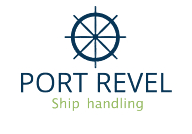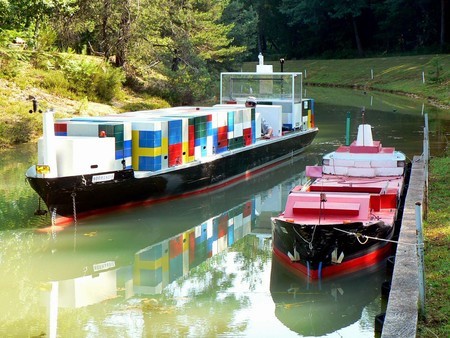After four years of service, the pilots of Le Havre do a training course on model ships in a training centre in PORT REVEL (France).
This course is supplementary to the simulator training given within our own centre.

Why train on manned models?

(Source SOGREAH) “Because this is still the best way to acquire certain reflexes which, when the time comes, will make all the difference between being good and being the best. Training on the scale models provides experience that could never be gained on real ships for the simple reason that neither ship-owners nor local authorities would allow such risks to be taken. Scale models allow the shiphandler to make mistakes. Scale models allow experimentation on ship behaviour to explore unknown fields beyond the limits of safety.
Training on the manned 1:25 scale models is a valuable complement to training on electronic simulators (similar to those used in the aviation industry) as it provides additional experience through a feeling of “déjà vu”:
- Nature is at work on scale models, with random effects similar to those encountered in real-life situations. The unforeseeable character of squalls, shallows, currents and waves calls for an immediate, appropriate reaction, without any repeat or automatic response. And when things go wrong on the scale model, the pilot really feels his ship run aground or collide with another ship or berth. Those who have experienced a situation of this kind know how much it motivates and convinces them to do better…
- For the same reason (natural phenomena) hydrodynamic effects are correctly reproduced on scale models and it is therefore unnecessary to transpose them in the form of complex equations. This gives a better simulation of hydrodynamic effects such as interactions between ships (for example in a canal), interactions between the ship and berth, little under-keel clearance and the use of anchor dredging or tugs in various operating situations.
- The scale effect of wind on a manned model is well known, but it is also well known that this is in no way detrimental to the use of manned models for serious and effective shiphandling training. Wind is a factor in the everyday life of Pilots throughout the world. The design of manned model lakes is such that the wind element will vary in different parts of the lake. This allows a course to be structured in such a manner as to introduce wind as and when required. Extreme wind conditions are encountered in the real world. If they occur at a manned model centre, with care they can be used in various scenarios to demonstrate how well control can be maintained.
- Therefore the ship models behave exactly like real ships, only much faster. Hence, reality will be much slower than the model, thus leaving quite a lot more time to react. Manned Models sharpen the shiphandlers’ natural senses of perception and anticipation and enable the ship’s behaviour as a whole to be appreciated. These skills are paramount when manoeuvring a full size vessel.
- The time scale also means that it is possible to perform five times as many manoeuvres. In other words, it is possible to perform as many manoeuvres in a 35 hour course as in 175 hours on the real ship. If you then consider the cost of scale models compared to computer models in terms of cost per manoeuvre and per pilot, you might find that scale models are even cheaper than computer models!!
Why did we choose the Port Revel Training Centre?
The centre has taught over 6 000 students since 1967. The instructors are very experienced maritime pilots.
- The 9 model float capable of reproducing 20 different vessels is excellent.
- The 3 escort tug boats are remote controlled by a real tug boat captain under pilot’s orders.
- The centre is upheld through SOGREAH and its experience of scale models.
- The lake is adaptable to most situations and is little affected by the wind.
- The lake has a lot of shallow water areas.
- The lake is fitted with a swell generator as well as generators producing currents and wind.
- The DGPS allows for precise analysing of exercises carried out on the lake.




